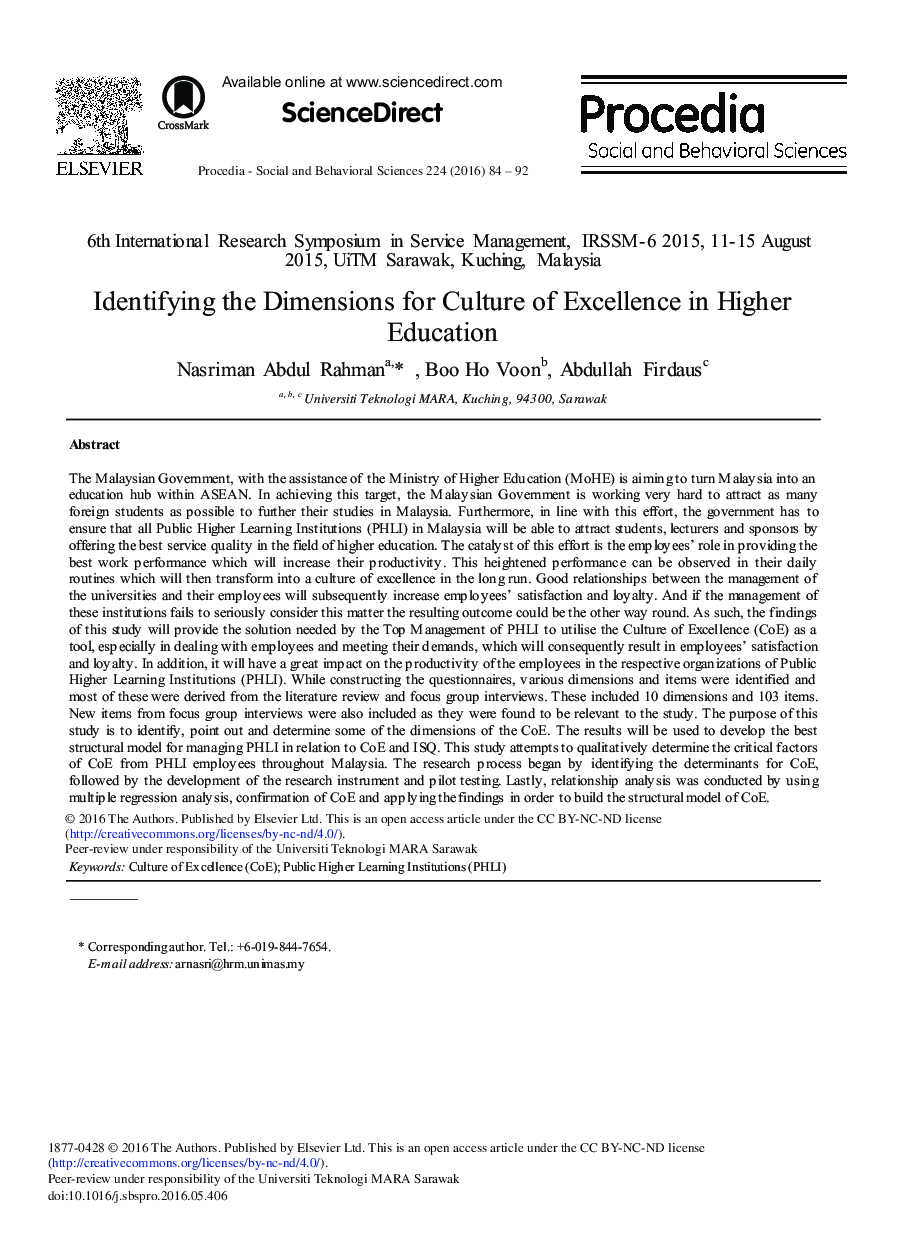| Article ID | Journal | Published Year | Pages | File Type |
|---|---|---|---|---|
| 1107388 | Procedia - Social and Behavioral Sciences | 2016 | 9 Pages |
The Malaysian Government, with the assistance of the Ministry of Higher Education (MoHE) is aiming to turn Malaysia into an education hub within ASEAN. In achieving this target, the Malaysian Government is working very hard to attract as many foreign students as possible to further their studies in Malaysia. Furthermore, in line with this effort, the government has to ensure that all Public Higher Learning Institutions (PHLI) in Malaysia will be able to attract students, lecturers and sponsors by offering the best service quality in the field of higher education. The catalyst of this effort is the employees’ role in providing the best work performance which will increase their productivity. This heightened performance can be observed in their daily routines which will then transform into a culture of excellence in the long run. Good relationships between the management of the universities and their employees will subsequently increase employees’ satisfaction and loyalty. And if the management of these institutions fails to seriously consider this matter the resulting outcome could be the other way round. As such, the findings of this study will provide the solution needed by the Top Management of PHLI to utilise the Culture of Excellence (CoE) as a tool, especially in dealing with employees and meeting their demands, which will consequently result in employees’ satisfaction and loyalty. In addition, it will have a great impact on the productivity of the employees in the respective organizations of Public Higher Learning Institutions (PHLI). While constructing the questionnaires, various dimensions and items were identified and most of these were derived from the literature review and focus group interviews. These included 10 dimensions and 103 items. New items from focus group interviews were also included as they were found to be relevant to the study. The purpose of this study is to identify, point out and determine some of the dimensions of the CoE. The results will be used to develop the best structural model for managing PHLI in relation to CoE and ISQ. This study attempts to qualitatively determine the critical factors of CoE from PHLI employees throughout Malaysia. The research process began by identifying the determinants for CoE, followed by the development of the research instrument and pilot testing. Lastly, relationship analysis was conducted by using multiple regression analysis, confirmation of CoE and applying the findings in order to build the structural model of CoE.
